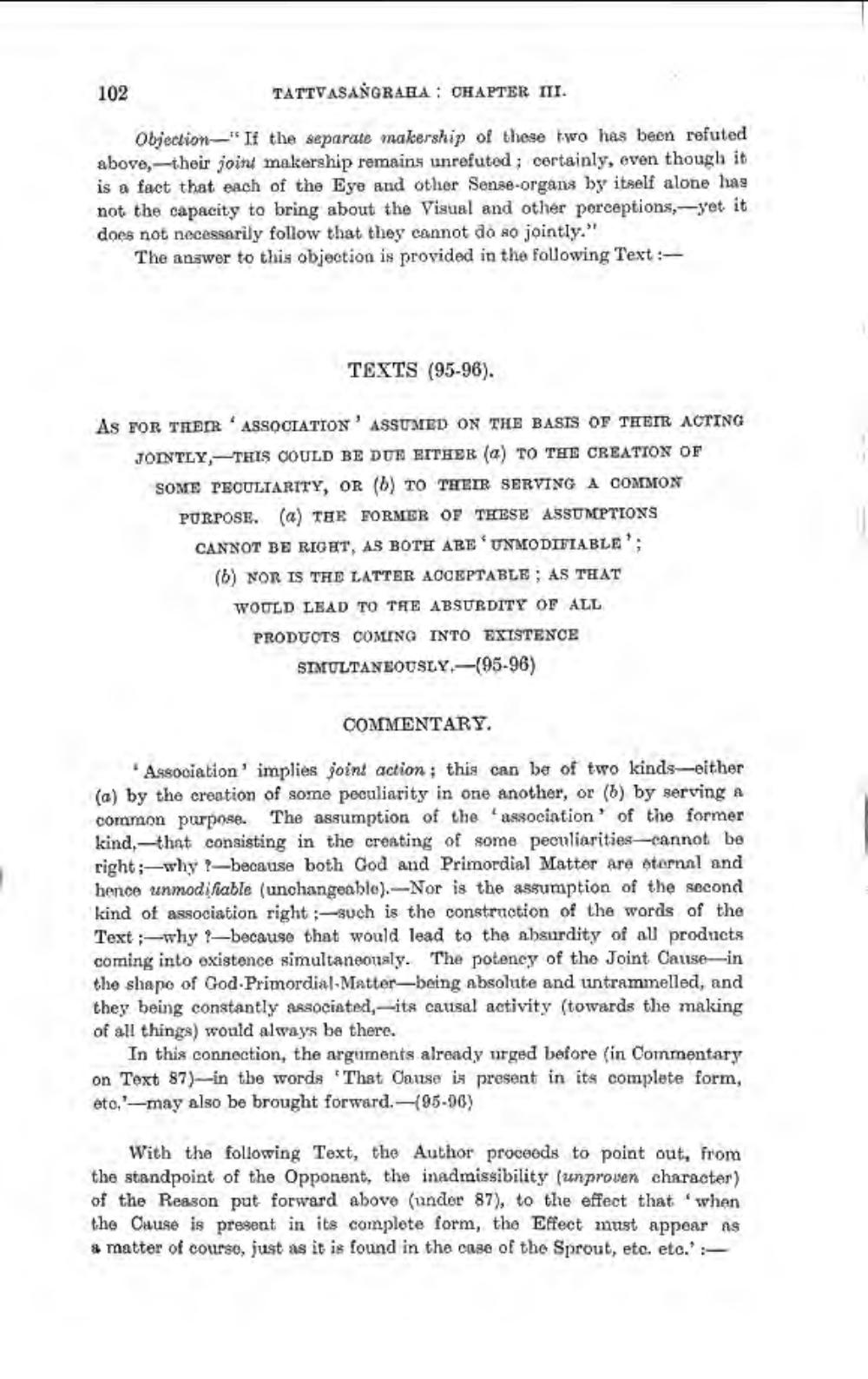________________
102
TATTVASANGRAHA : CHAPTER III.
Objection—"If the separate makership of these two has been refuted above,--their joint makership remains unrefuted ; certainly, even though it is a fact that each of the Eye and other Sense-organs by itself alone has not the capacity to bring about the Visual and other perceptions, yet it does not necessarily follow that they cannot do so jointly."
The answer to this objection is provided in the following Text :
TEXTS (95-96).
AS FOR THEIR ASSOCIATION' ASSUMED ON THE BASIS OF THEIR ACTING
JOINTLY,—THIS COULD BE DUF EITHER (a) TO THE CREATION OF SOME PECULIARITY, OR (6) TO THEIR SERVING A COMMON PURPOSE. (a) THE FORMER OF THESE ASSUMPTIONS CANNOT BE RIGHT, AS BOTH ARE' UNMODIFIABLE'; (6) NOR IS THE LATTER ACCEPTABLE ; AS THAT WOULD LEAD TO TRE ABSURDITY OF ALL PRODUCTS COMING INTO EXISTENCE
SIMULTANEOUSLY.-(95-96)
COMMENTARY.
Association' implies joint action; this can be of two kinds-either (a) by the creation of some peculiarity in one another, or (6) by serving A common purpose. The assumption of the association of the former kind,- that consisting in the creating of some peculiarities-cannot be right;why ?-because both Cod and Primordial Matter are eternal and hence unmodifiable (unchangeable).--Nor is the assumption of the second kind of association right :-uch is the construction of the words of the Text ;-why 1–because that would lead to the absurdity of all prodncts coming into existence simultaneously. The potency of the Joint Cause-in the shape of God.Primordial Matter-being absolute and untrammelled, and they being constantly associated, its causal activity (towards the making of all things) would always be there.
In this connection, the arguments already urged before (in Commentary on Text 87)-in the words That Cause is present in its complete form, eto,'-may also be brought forward.—(95-96)
With the following Text, the Author proceeds to point out, from the standpoint of the Opponent, the inadmissibility (unprover character) of the Reason put forward above (under 87), to the effect that when the Cause is present in its complete form, the Effect must appear as & matter of course, just as it is found in the case of the Sprout, etc. etc. :




